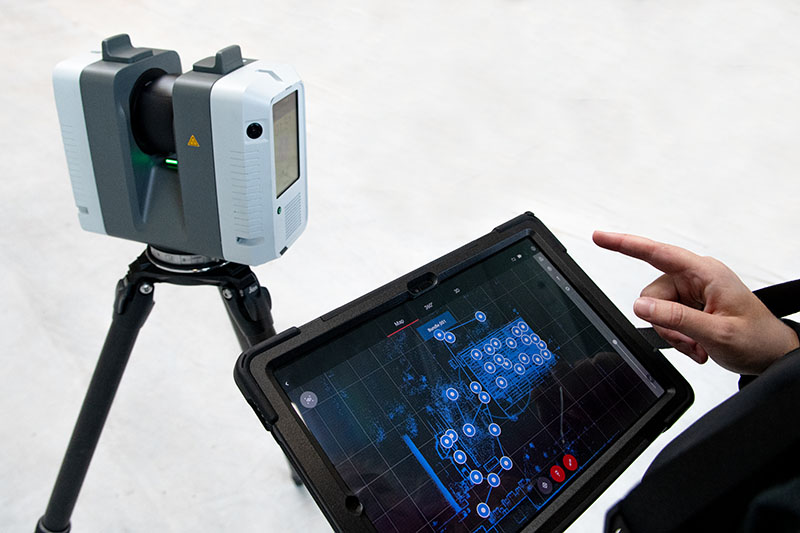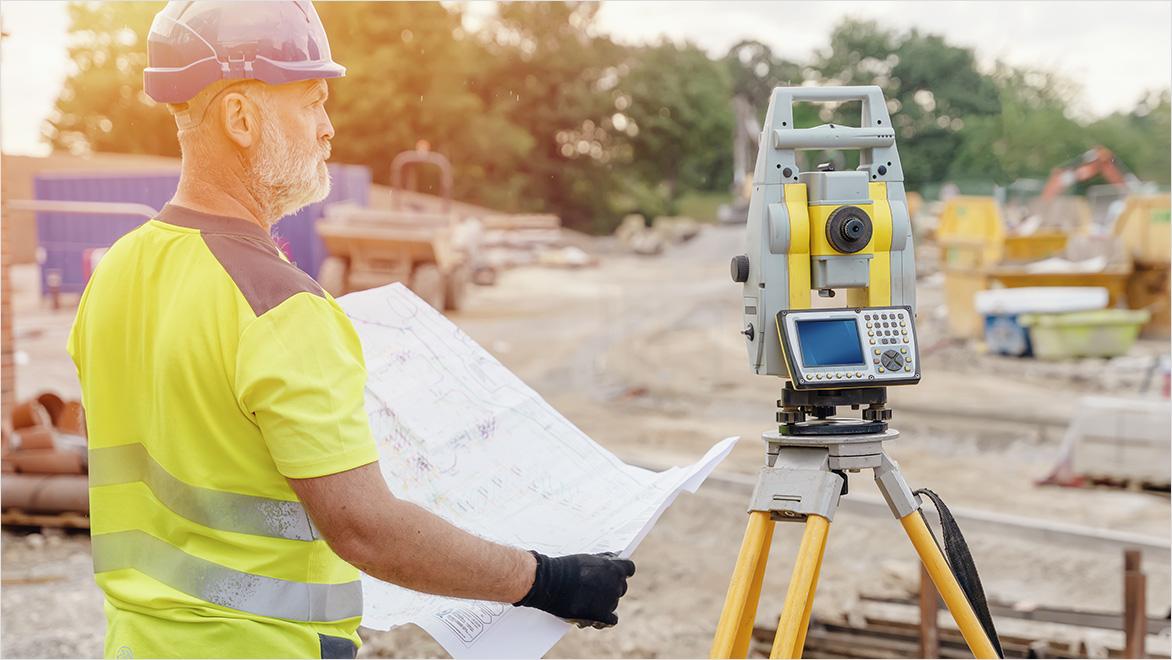How 3D Scanning Upgrades Team Coordination in Architecture
Wiki Article
The Future of Precision Dimension: Understanding the Duty of 3D Laser Scanning Innovation
The landscape of precision dimension is progressing with the introduction of 3D laser scanning innovation. This development promises improved precision and effectiveness across numerous fields. As industries begin to embrace these advancements, the implications for project management and execution end up being increasingly substantial. However, the transformative impacts of this technology expand past plain numbers and dimensions, meaning a broader shift in exactly how specialists approach their work. What might this suggest for the future?What Is 3D Laser Scanning Modern Technology?
3D laser scanning technology is a sophisticated technique used to record precise three-dimensional measurements of physical objects and environments. This innovation makes use of laser beams to gather data points, which are then processed to develop thorough digital representations of the scanned subjects. By emitting hundreds of laser pulses per secondly, 3D laser scanners can precisely record the form, size, and spatial connections of different surfaces.The procedure normally involves placing the scanner at different perspective to record considerable information. The resulting point cloud, a collection of countless data points, can be analyzed and exchanged 3D designs. Applications of this technology period multiple fields, including engineering, style, and heritage conservation, where it aids in paperwork and analysis. As a non-intrusive method, 3D laser scanning reduces disturbance to the setting, enabling complete evaluations of both existing structures and natural landscapes, consequently boosting understanding and facilitating educated decision-making.
Trick Perks of 3D Laser Scanning in Various Industries
3D laser scanning modern technology offers substantial advantages across various industries by offering enhanced precision and precision in measurements. This innovation not just improves operations yet likewise leads to significant time and expense financial savings. As companies significantly embrace this cutting-edge technique, the advantages end up being evident in enhanced project results and effectiveness.Improved Accuracy and Precision
The assimilation of laser scanning modern technology has actually changed the means sectors approach measurement and data collection. This innovation provides an unmatched degree of precision, recording millions of data factors in a solitary scan. Consequently, specialists across various fields, such as production, style, and design, can create highly described 3D designs that show real-world conditions. Boosted precision decreases mistakes connected with typical dimension techniques, guaranteeing that designs and buildings are based on accurate data. Additionally, the ability to catch detailed details enables much better evaluation and decision-making, eventually leading to improved results. By leveraging 3D laser scanning, industries can attain greater standards of high quality, making it an invaluable device for precise dimensions.Time and Cost Effectiveness
Performance in time and cost is a substantial benefit provided by laser scanning modern technology, changing project implementation throughout numerous industries. By quickly capturing comprehensive 3D data, laser scanning reduces the time invested on manual dimensions and reduces the danger of mistakes. This quick information purchase promotes quicker decision-making and project timelines, enabling teams to allocate resources better. Furthermore, the modern technology reduces the requirement for rework, as precise designs cause better preparation and implementation. Industries such as building, design, and manufacturing benefit considerably, seeing reduced expenses associated with labor and materials. Overall, 3D laser scanning not just improves operational effectiveness but additionally adds to substantial savings, making it a vital tool in today's affordable landscape.Applications of 3D Laser Scanning in Architecture and Building and construction
As building and building and construction projects grow increasingly intricate, the fostering of laser scanning technology has emerged as a transformative option. This technology provides accurate measurements and comprehensive 3D representations of existing frameworks, helping with more accurate preparation and style procedures. Architects utilize 3D laser scanning to create digital designs that capture detailed details, making sure that restorations and brand-new constructions straighten completely with existing problems.

The Duty of 3D Laser Scanning in Production Processes
3D laser scanning plays a vital function in making processes by improving quality control through exact dimensions and data collection. This technology enables producers to recognize discrepancies early, reducing mistakes and waste. Additionally, it simplifies production operations by facilitating much better interaction and coordination among groups.Enhanced Quality Assurance
Quality assurance in manufacturing procedures has actually been transformed by the assimilation of laser scanning innovation. This cutting-edge approach enables accurate dimensions and in-depth assessments of parts, making sure that they satisfy rigorous high quality standards. 3D laser scanning captures elaborate geometries and tolerances, enabling makers to identify inconsistencies from layout specifications quickly. This innovation greatly minimizes human mistake associated with traditional dimension approaches, giving reputable and regular information. By helping with real-time high quality assurance, it makes it possible for aggressive modifications in the production procedure, inevitably causing enhanced product dependability and client satisfaction. As sectors progressively take on 3D laser scanning, the potential for better quality assurance becomes evident, noting a transformative shift in manufacturing methods.Streamlined Manufacturing Process
Effective production workflows are progressively taking advantage of the combination of laser scanning technology in producing procedures. This modern technology permits rapid, precise measurements of assemblies and elements, considerably lowering the time needed for setup and modifications. By catching precise geometry, suppliers can rapidly recognize disparities in between style specs and actual items, enabling prompt rehabilitative actions. Furthermore, 3D laser scanning helps with the smooth transfer of data in between layout and manufacturing groups, improving collaboration and decreasing errors. The technology additionally supports digital double creation, permitting real-time surveillance and optimization of manufacturing processes. As a result, companies index can achieve higher efficiency, minimized waste, and improved total performance, inevitably driving affordable advantage in the market.Maintaining Heritage: How 3D Laser Scanning Aids Cultural Preservation
As social heritage websites face the threat of wear and tear and damage, cutting-edge modern technologies such as laser scanning arise as essential tools for preservation efforts. 3D laser scanning captures elaborate details of historical structures and artefacts with impressive precision, developing electronic versions that serve several functions in conservation. These models permit exact paperwork of existing problems, enabling specialists to keep an eye on changes over time and analyze wear and tear risks.Furthermore, laser scanning facilitates online repair, aiding conservators create prepare for repair work or recreating lost elements without intrusive methods. The technology additionally aids in informing the public, using immersive experiences with digital trips that highlight the relevance of these websites. By incorporating 3D laser scanning right into cultural conservation methods, stakeholders can guarantee that heritage is preserved for future generations while enhancing understanding and appreciation of historical contexts.
The Future Overview: Developments and Patterns in 3D Laser Scanning Technology
Though 3D laser scanning technology has currently transformed different sectors, its future pledges also higher innovations that will certainly improve availability, precision, and speed. Arising trends show a boost in combination with expert system and device learning, causing smarter information processing and analysis capacities. This synergy will certainly make it possible for quicker decision-making and even more specific end results in fields such as construction, heritage, and design conservation.Moreover, improvements in hardware are anticipated to generate lighter, extra portable scanning tools, democratizing accessibility for smaller companies and private professionals - 3D Scanning. As software program remains to progress, explanation straightforward applications will certainly streamline intricate workflows, making 3D scanning much more obtainable to non-experts
The increase of cloud-based solutions will certainly promote real-time partnership and data sharing among stakeholders, leading the method for streamlined job monitoring. Collectively, these trends signify a future where 3D laser scanning technology comes to be an essential tool in an also wider spectrum of applications.
Regularly Asked Inquiries
Just How Much Does 3D Laser Scanning Modern Technology Price?

What Are the Abilities Called For to Run 3D Laser Scanners?
Operating 3D laser scanners requires technological efficiency, interest to detail, spatial awareness, understanding of software for information processing, and an understanding of surveying concepts. In addition, solid analytic capacities and analytical skills are important for efficient procedure.Can 3D Laser Scanning Incorporate With Various Other Technologies?
Yes, 3D laser scanning can incorporate effortlessly with other innovations, such as Geographic Details Equipment (GIS), Building Details Modeling (BIM), and augmented truth, improving information accuracy and facilitating improved evaluation across different markets and applications. - 3D ScanningWhat Is the Common Scanning Range of These Gadgets?
The normal scanning variety of 3D laser scanning devices varies extensively, usually in between 50 meters to over 1,000 meters, relying on the version and application, affecting their suitability for various precision measurement tasks and atmospheres.How much time Does a 3D Laser Scanning Project Take?
A 3D laser scanning project generally takes anywhere from a couple of hours to several days, depending on variables such as task dimension, intricacy, and called for information. Each task's timeline can vary substantially based upon these elements.The landscape of precision measurement is progressing with the introduction of 3D laser scanning modern technology. 3D laser scanning technology is an innovative method made use of to catch specific three-dimensional dimensions of physical items and atmospheres. 3D laser scanning technology uses significant benefits across different sectors by offering boosted precision and precision in measurements. 3D laser scanning page technology has actually currently changed various sectors, its future assurances also better developments that will enhance precision, accessibility, and rate. 3D laser scanning technology commonly sets you back in between $10,000 and $100,000, depending on the devices's features and abilities.
Report this wiki page